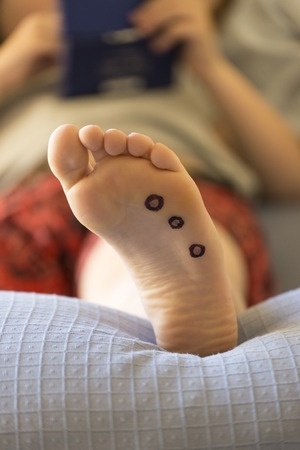Connect With Us
Blogs
Displaying items by tag: Foot Warts
The Truth About Warts
Frequently patients will come to us at Superior Foot & Ankle Center to treat warts. What we find interesting is the amount of misinformation and misconceptions out there about this common condition. Below are some myths about warts:
MYTH: Warts only occur in people with poor hygiene.
FACT: Warts are caused by a virus that penetrates your skin and then forms the telltale fleshy bump. They do not result from lack of cleanliness in the patient but rather that the patient walked on a surface where the virus was present. Viruses thrive in moist, warm environments such as showers at the gym or the community pool. For this reason, it is recommended that patients wear flip flops or rubber shower shoes when walking around in these types of public places.
MYTH: You can’t catch a wart from another person.
FACT: Warts are actually quite contagious. They can spread from person to person and also to other parts of your own body. All you have to do is scratch a wart and then touch another place on your body and the virus spreads. If someone in your family has a wart on their foot you should take extra care cleaning the shower and never share towels, shoes, socks, nail clippers, emery boards or any other items that touch another person’s foot.
MYTH: You can get rid of warts with wart removers you find at the drug store.
FACT: While over-the-counter products do exist for removing warts they can damage surrounding healthy tissue and may be unsuccessful in eliminating warts. Warts can be very stubborn to remove and can sometimes recur after they appear to be completely gone. It’s best to let one of our podiatrists, Dr. Victoria Foley and Dr. Constance Omelas care for your wart. The foot doctor will be able to identify the type of wart and prescribe the proper treatment to safely remove it.
MYTH: Warts don’t really do any harm so you don’t have to remove them if you don’t want to.
FACT: While it’s true that warts are not generally dangerous or harmful, they can cause pain and discomfort, particularly if they develop on the heel or ball of your foot. Since they are also contagious, it’s best to get them removed as soon as possible. Left untreated warts can also grow in size and multiply on your foot.
If you have a wart, contact our Long Beach office for an appointment by calling: 562-420-9800.
Everything You Need to Know About Gout
Gout, typically found in diabetic patients, is an unusually painful form of arthritis caused by elevated levels of uric acid in the bloodstream. The condition typically strikes the big joint on the big toe. It has also been known to strike the knees, elbows, fingers, ankles and wrists—generally anywhere that has a functioning, moving joint.
The high level of uric acid in a person’s bloodstream creates the condition known as hyperuricema—the main cause of gout. Genetic predisposition occurs in nine out of ten sufferers. The children of parents who suffer gout will have a two in ten chance of developing the condition as well.
This form of arthritis, being particularly painful, is the leftover uric acid crystallizing in the blood stream. The crystallized uric acid then travels to the space between joints where they rub, causing friction when the patient moves. Symptoms include: pain, redness, swelling, and inflammation. Additional side effects may include fatigue and fever, although reports of these effects are very rare. Some patients have reported that pain may intensify when the temperature drops, such as when you sleep.
Most cases of gout are easily diagnosed by a podiatrist’s assessment of the various symptoms. Defined tests can also be performed. A blood test to detect elevated levels of uric acid is often used as well as an x-ray to diagnose visible and chronic gout.
Treatment for gout simply means eliminating symptoms. Non-steroid anti-inflammatory drugs or NSAIDs (Colchicine and other corticosteroid drugs, etc.) will quell the redness, the swelling, and the inflammation. However, managing your diet, lifestyle changes, and using preventative drugs are all helpful toward fully combating the most severe cases.
Those that lead an inactive lifestyle are at a higher risk for gout. Any amount of exercise decreases the probability of repeat encounters with the condition. Reducing your consumption of red meat, sea food, and fructose-sweetened drinks also reduces the likelihood of chronic gout as well.
Ingesting Vitamin C, coffee, and particular dairy products can help with maintaining a healthy lifestyle. There are new drugs out on the market that inhibit the body’s production of uric acid-producing enzymes. However, reducing or eliminating your overall levels of uric acid is the best remedy to ensuring you lead a gout-free life.

